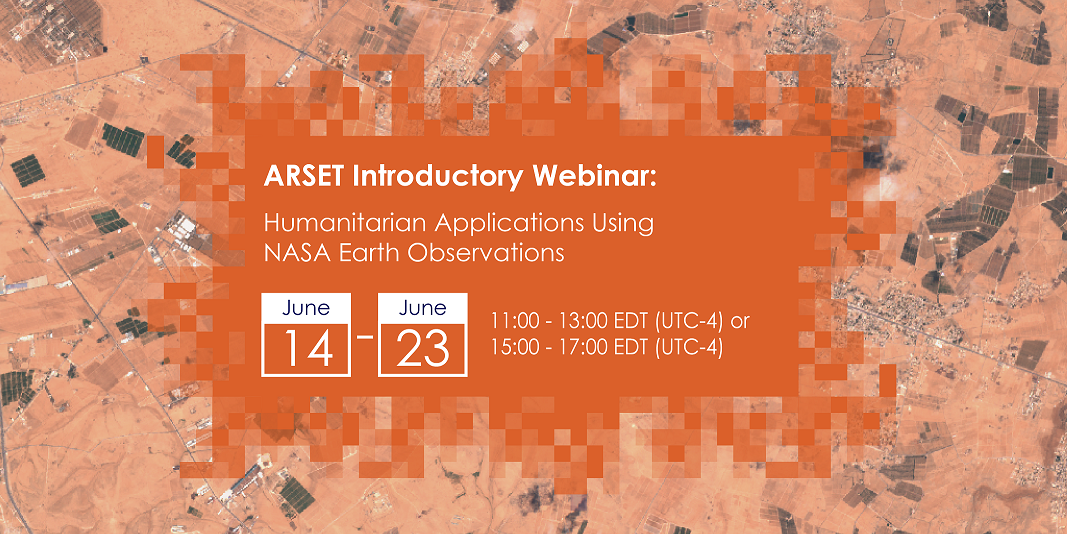Conflict, war, and forced displacement affect millions of people each year and have immediate and long-term consequences for human health and development, in addition to causing the degradation of natural and managed landscapes. Analysis with NASA satellite imagery can help target humanitarian response and relief by i) offering a timely understanding of region-specific environmental conditions and change, and ii) capturing contextual information over broad geographic regions and time spans.
This 4-part introductory training will focus on using NASA data products for monitoring human settlements and landscapes during armed conflict and forced displacement. This ARSET training is the first dedicated to humanitarian applications of NASA satellite imagery with topics including monitoring urban damage, mapping refugee settlement dynamics, and gauging climate hazards at refugee settlements. For each topic, we will discuss relevant satellite sensors and methodologies, data access and analysis using Google Earth Engine, as well as assumptions, opportunities, and limitations of various remote sensing-based approaches in humanitarian applications.
This training supports quantitative and visual understanding of short- and long-term conflict effects that are evident in satellite imagery, complements analysis of georeferenced humanitarian data, and builds on previous ARSET trainings associated with cropland monitoring, human settlement detection, disaster risk assessment, nighttime lights, and Google Earth Engine.
Relevant UN Sustainable Development Goals:
- Goal 11: Make cities and human settlements inclusive, safe, resilient and sustainable
- Goal 15: Life on Land
- Goal 16: Peace, Justice, and Strong Institutions
Course Dates: June 14, 16, 21, & 23, 2022
Times: 11:00-13:00 or 15:00-17:00 EDT (UTC-4); There will be identical sessions at two different times of the day. Participants need only to register and attend one daily session.
Learning Objectives: After participating in the training, attendees will be able to:
- Conceptualize landscape- and settlement-level monitoring with satellite remote sensing
- Select a range of satellite image data (i.e., optical, radar, nighttime lights, etc.) for humanitarian applications
- Recognize the value of time series analysis for monitoring acute and long-term changes in humanitarian contexts
- Identify opportunities and limitations of using satellite data in humanitarian applications
- Integrate satellite-derived humanitarian data with other open-access geospatial products on population, building footprints, infrastructure, etc.
Audience: This training is primarily intended for stakeholders, academics, researchers, non-governmental organizations (NGOs), international agencies, and government ministries involved in humanitarian response and decision support activities.
Course Format: Four, 2-hour parts

